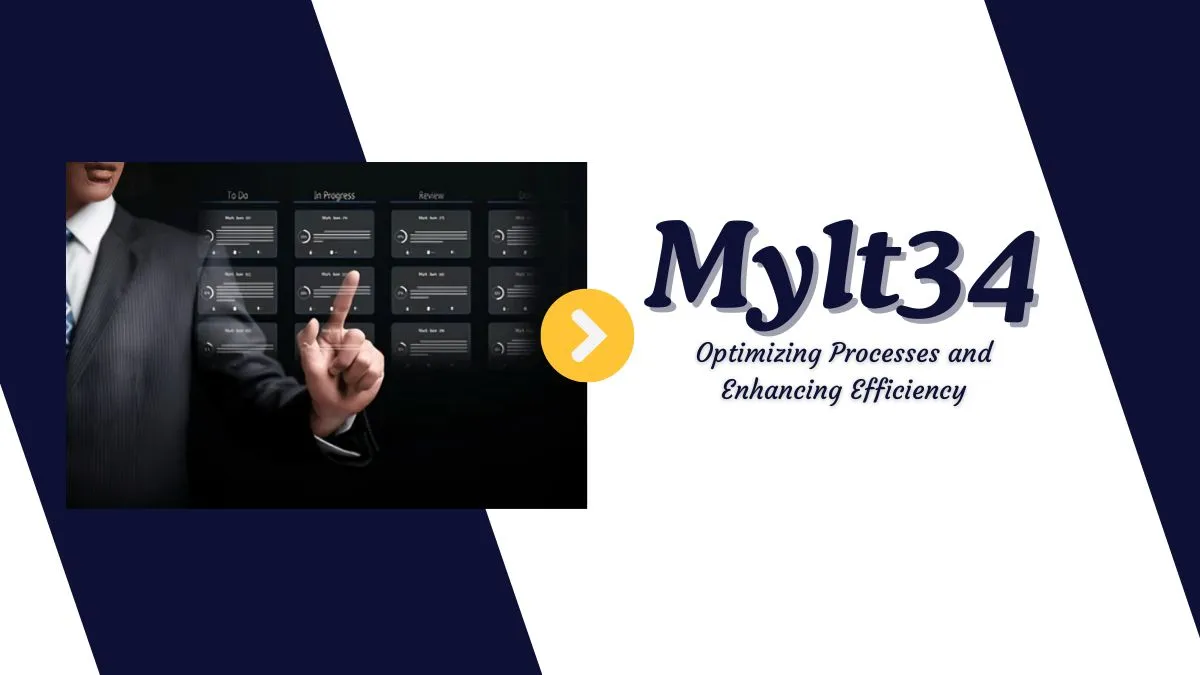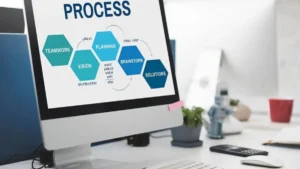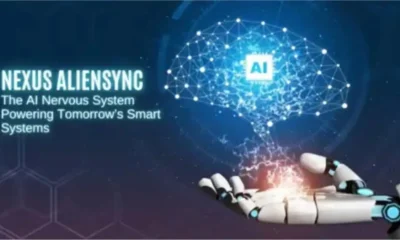TECHNOLOGY
Mylt34: Optimizing Processes and Enhancing Efficiency

Mylt34 is a versatile platform designed to optimize processes and enhance efficiency across various personal and professional settings. It integrates a range of features that streamline task management, improve workflow organization, and foster better team collaboration.
Core Features of Mylt34
Task Automation
The software performs most of the sundry operations, thus enabling the Mylt34 users to direct their efforts to more priority functions. Through activities like data input, report preparation, and email replies, the significant amount of work will be minimized, and potential errors will be eliminated because of Mylt34. For instance, marketing personnel can automatically track marketing campaigns and generate the results, and IT personnel, can monitor the systems and manage the alerts automatically. This leads to a saving of a lot of time and hence an enhancement in productivity in the organization.
Workflow Management
Flexible and efficient workflow management is the core idea underlying the features of Mylt34. A user can create functionality supporting a sophisticated compound of procedures depending on the user’s preference. It supplies the features for configuring and visualizing flowcharts of tasks, assigning tasks, defining their deadlines, and tracking the statuses of activities. The integrated and adjustable processes facilitate workflow enhancement to accommodate the team’s particular needs in executing their duties; hence, productivity and coordination are boosted.

Collaboration Tools
All of Mylt34’s collaboration aspects help make communication in a group and teamwork smooth as butter. Effective uses of multiple applications for integration of chat functions for communication, use of a common workplace that can be accessed by all the team members, and real-time project status updates for the team members make it possible for the members to be in touch. It also allows domain hosting and integration with various applications, such as Slack, which enables the running of everyday communications within the channels without interference with the usual flow.
Integration with Popular Platforms
- Slack Integration: The integration with Slack enables users to receive updates, assign tasks, and communicate within their preferred messaging environment. This integration ensures project information flows smoothly between Mylt34 and Slack, keeping teams synchronized.
- Google Workspace Integration: Google apps integration enables users to connect Mylt34 with Google Drive, Gmail, and Google Calendar. It integrates document sharing, email communication, and calendars; thus, the user can work harmoniously on projects and manage communication in one application.
- Microsoft Office Integration: Its integration with Microsoft Office creates efficiency since it allows the interaction of Word, Excel, and PowerPoint. It makes sharing and editing of documents possible and easier, enhancing how projects are implemented.
Customization Options
- Dashboards: Users can customize dashboards to display relevant metrics, tasks, and project information. This flexibility allows for personalized views that align with individual preferences and priorities.
- Workflows: Mylt34 enables users to create and modify workflows based on their operational needs. Users can design workflows that reflect their processes and requirements when managing simple tasks or complex projects.
- Task Views: Customizable task views allow users to organize and prioritize tasks according to their workflow. Options include sorting by deadline, project, or team member, ensuring users can efficiently manage their workload.

Benefits of Using Mylt34
Increased Efficiency
Automating tasks and optimizing workflows significantly boosts overall efficiency. As routine tasks are handled automatically and workflows are streamlined, teams can achieve more in less time. This efficiency gain translates into faster project completion and improved operational performance.
Time-Saving Through Automation
One of the greatest innovations that has helped people manage their time is automation. The application also has functionalities that cut the amount of time consumed in mundane chores so that workers can engage in more complex responsibilities. For example, automated status and progress updates are among the efficiencies that eliminate time that would otherwise be spent collecting data.
Improved Team Collaboration
Another advantage that should be noted is the increased collaboration efficiency resulting from using Mylt34. Opportunities such as built-in communication instruments and the organization of exchanges with colleagues in real time enhance work collaboration and organization. Individuals can also pass on information to the group members and receive constructive criticism and feedback from other members, as well as engage in collaborative working on group projects, which in turn enhances efficiency.
Centralized Task Management
These include its central idea of managing tasks, where it is easier to track and control tasks. A large benefit of using this platform is that all the tasks, the due dates, and the details of each project can be followed easily, thus enabling planning and management so that nothing is overlooked.
Reduced Operational Costs
Cost savings are a significant advantage of using Mylt34. The platform’s automation features and efficiency gain lower operational costs by reducing the need for manual labor and minimizing errors. Additionally, streamlined workflows and centralized task management optimize resource use and contribute to cost reductions.
Target Industries and Use Cases
Marketing
Thus, in the marketing industry, the concept provides great value as it can be used for automatic campaign tracking, creating reports, and reporting to clients. Marketing departments can organize and streamline campaigns, set goals and KPIs, and collaborate on creative content and tasks, which increases the effectiveness of their marketing activities.

Information Technology
For IT departments, Mylt34 supports project management and system monitoring. The platform’s automation capabilities streamline routine tasks such as software updates and system alerts, while customizable workflows and task views help manage IT projects and track progress.
Creative Services
Creative professionals benefit from Mylt34’s project management and collaboration features. The platform facilitates the management of creative projects, including design, content development, and client feedback. By automating administrative tasks and streamlining collaboration, Mylt34 enhances the efficiency and creativity of creative teams.
Advanced Features and Tips
Mylt34 offers advanced automation features for users seeking to streamline their workflows further. By leveraging advanced automation capabilities, users can set up complex rules and triggers, automate multi-step processes, and integrate with additional tools to enhance efficiency. Beyond the primary integrations with Slack, Google Workspace, and Microsoft Office, Mylt34 supports integration with other platforms. Users can explore additional integration options to connect with other tools and services, enhancing their workflow and productivity.
Future Developments
As Mylt34 continues to evolve, users can expect new features and enhancements that further improve functionality and user experience. Future developments may include additional integrations, advanced automation capabilities, and new workflow optimization tools.
-

 BIOGRAPHY7 months ago
BIOGRAPHY7 months agoBehind the Scenes with Sandra Orlow: An Exclusive Interview
-

 HOME1 year ago
HOME1 year agoDiscovering Insights: A Deep Dive into the //vital-mag.net blog
-

 HOME1 year ago
HOME1 year agoSifangds in Action: Real-Life Applications and Success Stories
-

 BIOGRAPHY1 year ago
BIOGRAPHY1 year agoThe Woman Behind the Comedian: Meet Andrew Santino Wife




























